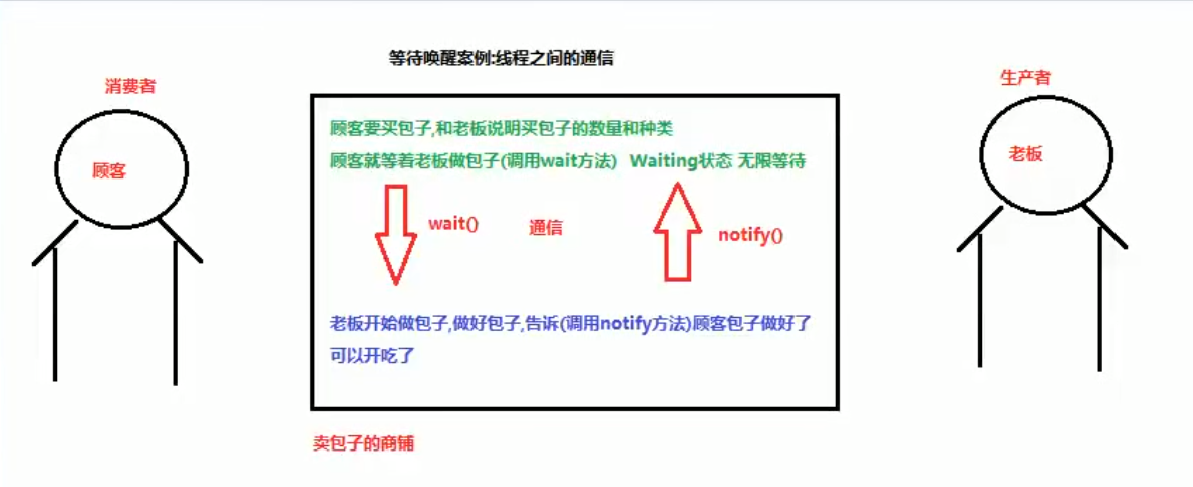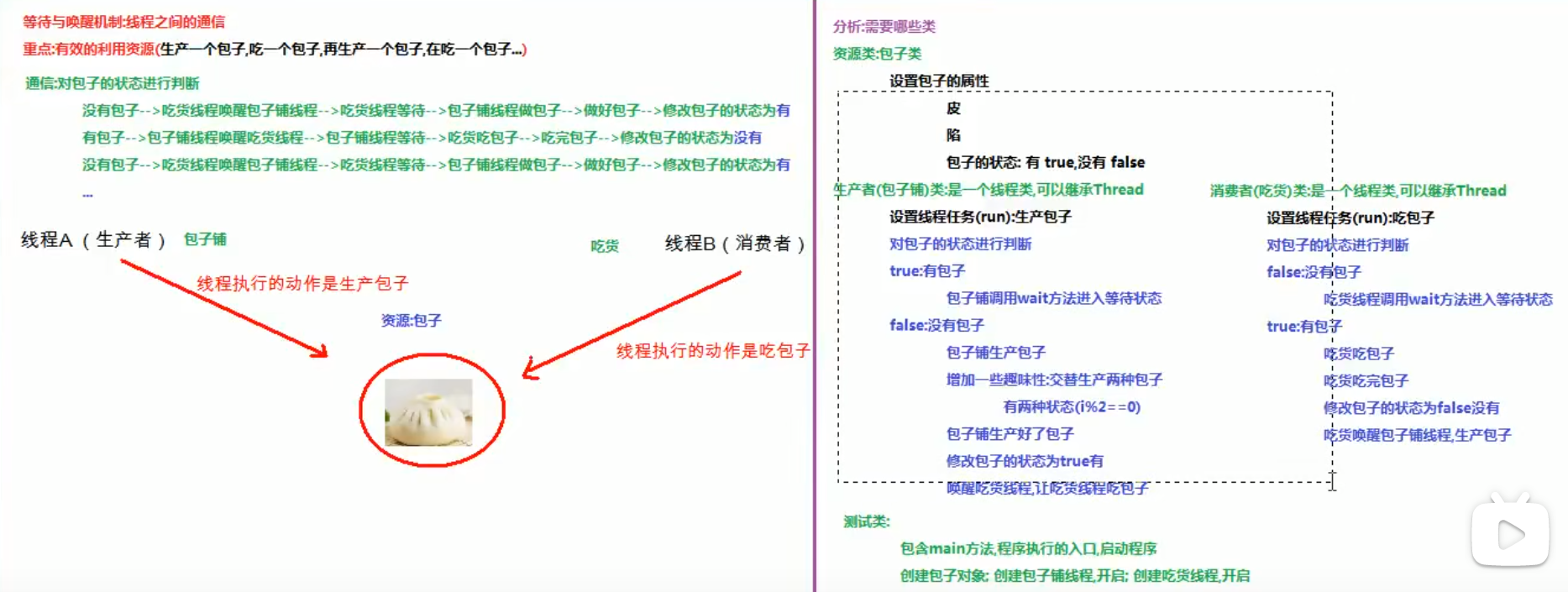一,创建线程的几种方式:
public class futureTask_test { public static void main(String[] args) throws InterruptedException, ExecutionException { //创建futureTask FutureTask<Integer> task=new FutureTask<Integer>(()->{ System.out.println("hello"); Thread.sleep(3000); return 1000; }); //传入thread中 Thread t1=new Thread(task,"t1"); t1.start(); System.out.println(task.get()); } }
二,jconsole
1. 监控本地Java进程
对于本地的Java进程很简单,只需要在启动需要监控的Java程序后,启动Jconsole,在本地进程列表中选择该进程点击“连接”按钮即可。例如,我们先启动JDK自带的另一个监控工具JVisualVM,然后启动JConsole:
在JConsole的本地进程列表中可以看到JVisualVM进程,选择并连接之。
2. 监控远程Java进程
2.1 设置远程监控相关选项
对于远程Java进程的连接,会要麻烦些,首先需要在需监控的远程Java程序启动脚本中加入与JVM远程监控相关的选项:
1) 开启JVM远程监控
-Dcom.sun.management.jmxremote=true
2) 监控的IP地址
-Djava.rmi.server.hostname=192.168.91.166,远程进程所在主机的IP。
3) 监控的端口
-Dcom.sun.management.jmxremote.port=50013,这个端口值可以任意设置,但在之后用Jconsole连接这个远程进程的时候,远程进程中的port一定要和此处的设置一致,并且一定不要和远程进程的服务端口区分开。
4) 是否禁用ssl验证
-Dcom.sun.management.jmxremote.ssl,false为禁用,true为启用。
5) 是否需要用户密码验证
-Dcom.sun.management.jmxremote.authenticate,false为不需要验证,true为需要验证。但我在Win7(32位、64位)中tomcat5.5.23下试着将该选项设置为true,tomcat无法启动,命令行窗口一闪而过。
有试过象参考文献中所说的,修改jdkjre及jre下的jmxremote.password和jmxremote.access,又有尝试象参考文献4中所说的,修改jdkjre及jre下结果也是一样的。结果也是一样的management.properties,结果均一样的。
有哪位遇到过,并解决了这个问题,如果看到这儿的,希望可以帮忙解答一下,先谢过了!!
2.2 连接远程Java进程
有两种连接远程Java进程的方法,效果是一样的。
1) 命令行中连接远程Java进程
直接在命令行中启动JConsole的时候,带远程进程参数:

2) JConsole图形界面上连接远程Java进程
先在命令行中不带远程进程参数启动JConsole,然后在JConsole新建连接对话框中选择远程进程,填入远程进程参数:,最后点击“连接”按钮。
java -cp . -Dcom.sun.management.jmxremote.port=8999 -Dcom.sun.managent.jmxremote.authenticate=false -Dcom.sun.management.jmxremote.ssl=false JConsoleTest
二,两阶段终止模式

1 public class TwoPhaseTermination { 2 3 public static void main(String[] args) throws InterruptedException { 4 Monitor monitor=new Monitor(); 5 monitor.startMon(); 6 7 Thread.sleep(3500); 8 monitor.stop(); 9 } 10 } 11 12 class Monitor{ 13 private Thread monitor;//监视器线程 14 15 //开始监视的方法 16 public void startMon() { 17 //定义线程 18 monitor=new Thread(()->{ 19 while(true) { 20 //获取打断标记 21 boolean interrupted=Thread.currentThread().isInterrupted(); 22 if(interrupted) {//被打断了 23 System.out.println("我被打断了,正在处理后事。。"); 24 break; 25 }else {//未被打断 26 try { 27 Thread.sleep(1000);//让出时间片 28 //未出现异常 29 System.out.println("我开始执行监控事情"); 30 } catch (InterruptedException e) { 31 // TODO: handle exception 32 //未出现异常,被打断了 33 //interrupted=true;不能用这种方式来改变打断标志 34 // 35 monitor.interrupt(); 36 37 } 38 39 } 40 } 41 }); 42 43 //开启线程 44 monitor.start(); 45 46 } 47 48 //停止监控 49 public void stop() { 50 monitor.interrupt(); 51 } 52 53 }
三,保护性暂停模式

1 public class GuardedSuspension { 2 private int id; 3 4 public GuardedSuspension(int id) { 5 this.id=id; 6 } 7 8 public int getId() { 9 return id; 10 } 11 12 13 14 public Object getResponse() { 15 return response; 16 } 17 18 19 20 private Object response; 21 22 public Object get(long timeout) { 23 synchronized (this) { 24 long begin=System.currentTimeMillis(); 25 long passtime=0; 26 if(response==null) { 27 //没有数据 28 try { 29 long waittime=timeout-passtime; 30 this.wait(waittime); 31 } catch (InterruptedException e) { 32 // TODO Auto-generated catch block 33 e.printStackTrace(); 34 } 35 passtime=System.currentTimeMillis()-begin; 36 } 37 return response; 38 } 39 }; 40 41 public void set(Object o) { 42 synchronized (this) { 43 this.response=o; 44 this.notifyAll(); 45 46 } 47 }; 48 }
升级的解耦:

1 public class Mailboxs { 2 private static int id=1; 3 private static synchronized int generateId() { 4 return id++;//自增id 5 } 6 private static Map<Integer, GuardedSuspension> boxes=new Hashtable<Integer, GuardedSuspension>();//保证线程安全 7 public static GuardedSuspension createGuardedSuspension(int id) { 8 9 //加入邮箱,取信 10 return boxes.remove(id); 11 12 13 } 14 public static GuardedSuspension getGuardedSuspension() { 15 GuardedSuspension go=new GuardedSuspension(generateId()); 16 //加入邮箱,送信 17 boxes.put(go.getId(),go); 18 return go; 19 20 } 21 public static Set<Integer> getIds() { 22 return boxes.keySet(); 23 } 24 25 26 }
四,顺序执行

public class Secquence extends ReentrantLock{ public static void main(String[] args) { Secquence secquence=new Secquence(); Condition a=secquence.newCondition(); Condition b=secquence.newCondition(); Condition c=secquence.newCondition(); Thread t1=new Thread(()->{ secquence.showInfo("a", a, b); },"t1"); Thread t2=new Thread(()->{ secquence.showInfo("b", b, c); },"t2"); Thread t3=new Thread(()->{ secquence.showInfo("c", c, a); },"t3"); t1.start(); t2.start();t3.start(); //主线程开启 try { Thread.sleep(1000); } catch (InterruptedException e) { // TODO Auto-generated catch block e.printStackTrace(); } secquence.lock(); try { System.out.println("开始"); a.signal(); }finally { secquence.unlock(); } } //多线程的顺序执行 private static int loopNumber=5; //打印方法 public void showInfo(String str,Condition current,Condition next) { for(int i=0;i<loopNumber;i++) { lock(); try { current.await(); System.out.print(str); next.signal(); } catch (InterruptedException e) { // TODO Auto-generated catch block e.printStackTrace(); } finally { // TODO: handle exception unlock(); } } } }

1 public class Secquence extends ReentrantLock{ 2 3 public static void main(String[] args) { 4 Secquence secquence=new Secquence(); 5 Condition a=secquence.newCondition(); 6 Condition b=secquence.newCondition(); 7 Condition c=secquence.newCondition(); 8 Thread t1=new Thread(()->{ 9 secquence.showInfo("a", a, b); 10 },"t1"); 11 Thread t2=new Thread(()->{ 12 secquence.showInfo("b", b, c); 13 },"t2"); 14 15 Thread t3=new Thread(()->{ 16 secquence.showInfo("c", c, a); 17 },"t3"); 18 t1.start(); 19 t2.start();t3.start(); 20 21 //主线程开启 22 try { 23 Thread.sleep(1000); 24 } catch (InterruptedException e) { 25 // TODO Auto-generated catch block 26 e.printStackTrace(); 27 } 28 secquence.lock(); 29 try { 30 System.out.println("开始"); 31 a.signal(); 32 }finally { 33 secquence.unlock(); 34 } 35 } 36 37 //多线程的顺序执行 38 39 private static int loopNumber=5; 40 //打印方法 41 public void showInfo(String str,Condition current,Condition next) { 42 for(int i=0;i<loopNumber;i++) { 43 lock(); 44 try { 45 46 current.await(); 47 System.out.print(str); 48 next.signal(); 49 50 } catch (InterruptedException e) { 51 // TODO Auto-generated catch block 52 e.printStackTrace(); 53 } finally { 54 // TODO: handle exception 55 unlock(); 56 } 57 } 58 59 } 60 61 }
1,同步锁原理

2,线程的状态图

2.1无限等待状态的图示


1 public class Demo01WaitAndNotify { 2 public static void main(String[] args) { 3 //创建唯一锁对象 4 Object obj=new Object(); 5 6 //创建一个消费者线程 7 new Thread() { 8 @Override 9 public void run() { 10 //也一直等着吃 11 while(true) { 12 //保证等待和唤醒只能有一个执行, 13 synchronized (obj) { 14 System.out.println("告诉老板要的包子的种类和数量"); 15 try { 16 obj.wait(); 17 } catch (InterruptedException e) { 18 // TODO Auto-generated catch block 19 e.printStackTrace(); 20 } 21 //唤醒之后的代码 22 System.out.println("包子做好了,开饭了"); 23 System.out.println("-----------------------"); 24 } 25 } 26 } 27 28 }.start(); 29 30 //创建一个老板线程(生产者) 31 new Thread() { 32 @Override 33 public void run() { 34 //一直在这做 35 while(true) { 36 try { 37 Thread.sleep(5000); 38 } catch (InterruptedException e) { 39 // TODO Auto-generated catch block 40 e.printStackTrace(); 41 } 42 synchronized (obj) { 43 System.out.println("老板5秒之后做好包子,告知顾客可以吃 包子"); 44 obj.notify(); 45 } 46 } 47 } 48 }.start(); 49 } 50 51 }
等待与唤醒机制,线程间的通信

代码实现:

1 package BaoZi; 2 3 public class Baozi { 4 //皮 5 String pi; 6 //馅 7 String xian; 8 //状态 9 boolean flag=false; 10 }

1 package BaoZi; 2 3 //注意使用同步技术,互斥 4 //必须使用同一个锁对象,并且将包子对象作为参数进行传递 5 6 public class BaoZiPu extends Thread { 7 //包子变量 8 private Baozi bz; 9 10 //使用带参的构造方法,为包子变量赋值 11 public BaoZiPu(Baozi bz) { 12 this.bz=bz; 13 } 14 15 //设置线程任务(run)生产包子 16 @Override 17 public void run() { 18 int count=0;//用于不同的馅的产生 19 //使用同步机制 20 while(true) {//一直生产包子 21 synchronized (bz) { 22 if(bz.flag==true) { 23 try { 24 bz.wait(); 25 } catch (InterruptedException e) { 26 // TODO Auto-generated catch block 27 e.printStackTrace(); 28 } 29 } 30 31 //被唤醒之后,生产包子 32 if(count%2==0) { 33 //生产薄皮 三鲜馅 34 bz.pi="薄皮"; 35 bz.xian="三鲜馅"; 36 }else { 37 bz.pi="冰皮"; 38 bz.xian="牛肉大葱"; 39 } 40 count++; 41 System.out.println("包子铺正在生产:"+bz.pi+bz.xian+"包子"); 42 //生产包子要3秒 43 try { 44 Thread.sleep(3000); 45 } catch (InterruptedException e) { 46 // TODO Auto-generated catch block 47 e.printStackTrace(); 48 } 49 //包子铺生产好了,修改状态 50 bz.flag=true; 51 bz.notify();//唤醒等待的吃货线程 52 System.out.println("包子铺已经生产:"+bz.pi+bz.xian+"包子好了,您可以吃了"); 53 } 54 } 55 56 } 57 58 }

1 package BaoZi; 2 3 public class ChiHuo extends Thread{ 4 //包子变量 5 private Baozi bz; 6 7 //使用带参的构造方法,为包子变量赋值 8 public ChiHuo(Baozi bz) { 9 this.bz=bz; 10 } 11 12 13 @Override 14 public void run() { 15 //使用死循环一直吃 16 while(true) { 17 synchronized (bz) { 18 if(bz.flag==false) { 19 //没有包子 20 try { 21 bz.wait(); 22 } catch (InterruptedException e) { 23 // TODO Auto-generated catch block 24 e.printStackTrace(); 25 } 26 } 27 28 //被唤醒之后执行的代码 29 System.out.println("吃货正在吃"+bz.pi+bz.xian+"的包子"); 30 bz.flag=false; 31 bz.notify();//唤醒包子铺 32 System.out.println("吃货已经吃完了:"+bz.pi+bz.xian+"的包子"); 33 System.out.println("-------------------"); 34 } 35 } 36 } 37 38 }

1 package BaoZi; 2 3 4 5 public class Test { 6 public static void main(String[] args) { 7 //创建包子对象 8 Baozi bz=new Baozi(); 9 new BaoZiPu(bz).start();//创建包子铺线程 10 new ChiHuo(bz).start();//创建吃货线程 11 } 12 }
五,线程池
1,自定义线程池

1 package ThreadPool; 2 //线程池 3 4 import java.util.HashSet; 5 import java.util.concurrent.TimeUnit; 6 7 public class TeadPool { 8 //任务队列 9 private BlockingQueue<Runnable> taskQueue; 10 //核心线程 11 private int coreSize; 12 //线程集合,存放任务 13 private HashSet<Worker> workers=new HashSet<TeadPool.Worker>(); 14 //获取任务的超时时间,以及单位 15 private long timeout; 16 private TimeUnit timeUnit; 17 //拒绝策略 18 RejectPolicy<Runnable> rejectPolicy; 19 public TeadPool( int coreSize ,long timeout,TimeUnit timeUnit,int queueSize,RejectPolicy<Runnable> rejectPolicy) { 20 21 taskQueue=new BlockingQueue<Runnable>(queueSize); 22 this.coreSize = coreSize; 23 24 this.timeout = timeout; 25 this.timeUnit = timeUnit; 26 this.rejectPolicy=rejectPolicy; 27 } 28 29 //执行任务 30 public void execute(Runnable task) {//要加锁 31 synchronized (workers) { 32 //小于交给worker执行 33 //if线程集合中的任务数大于核心线程数,放入阻塞队列 34 if(workers.size()<coreSize) { 35 Worker worker=new Worker(task); 36 workers.add(worker); 37 worker.start(); 38 }else { 39 //使用策略模式,处理情况拒绝策略,将决策权交给线程池的使用者 40 //抽象成接口,实现是有调用者实现 41 //掉用策略的逻辑放在blockingquqeue 42 taskQueue.tryPut(rejectPolicy,task); 43 } 44 } 45 46 } 47 48 //处理任务的类 49 class Worker extends Thread{ 50 private Runnable task; 51 52 public Worker(Runnable task) { 53 54 this.task = task; 55 } 56 57 @Override 58 59 public void run() { 60 //执行任务 61 //task不为空,执行任务 62 //task执行完毕,去阻塞队列里取 63 while(task!=null||(task=taskQueue.take())!=null) { 64 try { 65 task.run(); 66 } catch (Exception e) { 67 // TODO: handle exception 68 }finally { 69 task=null;//执行完任务 70 } 71 72 } 73 synchronized (workers) { 74 workers.remove(this);//没有任务要执行,移除 75 } 76 } 77 78 } 79 }

1 import java.util.ArrayDeque; 2 import java.util.Deque; 3 import java.util.concurrent.TimeUnit; 4 import java.util.concurrent.locks.Condition; 5 import java.util.concurrent.locks.ReentrantLock; 6 7 public class BlockingQueue<T> { 8 //任务队列 9 private Deque<T> queue=new ArrayDeque<T>(); 10 //锁 11 ReentrantLock lock=new ReentrantLock(); 12 //容量 13 private int capcity; 14 //生产者等待条件变量 15 private Condition fullWaitSet= lock.newCondition(); 16 //消费者等待条件变量 17 private Condition emptyWaitSet=lock.newCondition(); 18 19 public BlockingQueue(int size) { 20 this.capcity=size; 21 // TODO Auto-generated constructor stub 22 } 23 //阻塞获取 24 public T take() {//要加速操作 25 lock.lock(); 26 try { 27 28 while(queue.isEmpty()) { 29 //为空 30 try { 31 emptyWaitSet.await(); 32 } catch (InterruptedException e) { 33 // TODO Auto-generated catch block 34 e.printStackTrace(); 35 } 36 } 37 //不为空 38 T t=queue.removeFirst();//要移除 39 //获取后唤醒 full 40 fullWaitSet.signal(); 41 return t; 42 43 44 45 } finally { 46 // TODO: handle exception 47 lock.unlock(); 48 } 49 50 } 51 //超时时间阻塞获取 52 public T offer(long timeout,TimeUnit timeUnit) {//要加速操作 53 lock.lock(); 54 55 try { 56 long nanos=timeUnit.toNanos(timeout); 57 while(queue.isEmpty()) { 58 //为空 59 try { 60 if(nanos<=0) { 61 return null; 62 } 63 nanos=emptyWaitSet.awaitNanos(nanos);//该方法会返回等待的剩余时间 64 65 } catch (InterruptedException e) { 66 // TODO Auto-generated catch block 67 e.printStackTrace(); 68 } 69 } 70 //不为空 71 T t=queue.removeFirst();//要移除 72 //获取后唤醒 full 73 fullWaitSet.signal(); 74 return t; 75 76 77 78 } finally { 79 // TODO: handle exception 80 lock.unlock(); 81 } 82 83 } 84 //阻塞添加 85 public void put(T t) { 86 lock.lock(); 87 try { 88 while(queue.size()==capcity) { 89 try { 90 fullWaitSet.await(); 91 } catch (InterruptedException e) { 92 // TODO Auto-generated catch block 93 e.printStackTrace(); 94 } 95 } 96 //队列有剩余空间 97 queue.addLast(t); 98 //唤醒 空 99 emptyWaitSet.signal(); 100 101 } finally { 102 // TODO: handle finally clause 103 lock.unlock(); 104 } 105 } 106 //阻塞添加的超时时间 107 public boolean poll(T t,long timeout,TimeUnit timeUnit) { 108 lock.lock(); 109 try { 110 long nanos=timeUnit.toNanos(timeout); 111 while(queue.size()==capcity) { 112 try { 113 if(nanos<=0) { 114 return false; 115 } 116 nanos=fullWaitSet.awaitNanos(nanos); 117 } catch (InterruptedException e) { 118 // TODO Auto-generated catch block 119 e.printStackTrace(); 120 } 121 } 122 //队列有剩余空间 123 queue.addLast(t); 124 //唤醒 空 125 emptyWaitSet.signal(); 126 return true; 127 } finally { 128 // TODO: handle finally clause 129 lock.unlock(); 130 } 131 } 132 //获取大小 133 public int getCapcity() {//也要枷锁 134 lock.lock(); 135 try { 136 return this.capcity; 137 } finally { 138 // TODO: handle finally clause 139 lock.unlock(); 140 } 141 142 } 143 public void tryPut(RejectPolicy<T> rejectPolicy,T task) { 144 // TODO Auto-generated method stub 145 lock.lock(); 146 try { 147 //任务队列满了 148 if(queue.size()==capcity) { 149 //拒绝策略实现 150 rejectPolicy.reject(this, task); 151 }else { 152 //队列有剩余空间 153 queue.addLast(task); 154 //唤醒 空 155 emptyWaitSet.signal(); 156 } 157 } finally { 158 // TODO: handle finally clause 159 lock.unlock(); 160 } 161 } 162 }
//拒绝策略 public interface RejectPolicy<T> { void reject(BlockingQueue<T> queue,T task); }
2,reentrantLock的tryAcquire的源码分析
原文链接:https://blog.csdn.net/sscout/article/details/102616722
